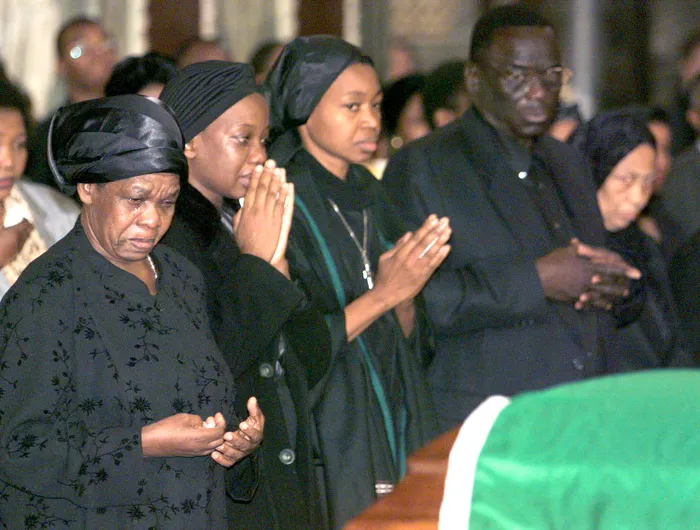Remembering Nyerere

Picture: Paul Hackett/REUTERS – Maria Nyerere (left), the wife of former Tanzanian President Julius Nyerere and several of his eight children weep beside his coffin in Westminster Cathedral October 16. Julius Nyerere is generally regarded as the father of Tanzania.
Picture: Sayyid Azim/AP – Mwalimu Julius Kambarage Nyerere on October 10, 1997 during a news conference in Arusha.
On 18 October 1999, three million Tanzanians lined the streets of Dar es Salaam to pay their final respects to Tanzanian anti-colonial activist, politician and former politician Mwalimu Julius Kambarage Nyerere. (Mwalimu: Swahili for ‘Teacher’)
They filed past his coffin for three days and nights.
Nyerere passed away at the age of 77 on 14 October 1999 at St Thomas's Hospital in London where he was earlier admitted to undergo treatment for leukaemia.
Therefore, the period between October 14 to October 22 is often used to commemorate Nyerere and has become a special week for southern Africans as they reflect and rededicate themselves to Africa's future.
Moreso, in Tanzania, October 14 marks Julius Nyerere Day.
Nyerere's State funeral, attended by 16 heads of state from Africa, representatives of more than 70 countries worldwide and of regional and international organisations, European royalty, was the largest gathering in the history of Tanzania.

On October 23, Mwalimu returned to his final resting place among his family in the village of Butiama, in the Mara region, near Lake Victoria.
Those who spoke at Nyerere’s funeral echoed the themes of Mwalimu's commitment and legacy of integrity, unity, dignity and equality.
"He is our father, and we are his children." The then President of Mozambique, Joaquim Chissano, spoke from the heart, thanking the Tanzanian people led by Mwalimu for what they had done to support the liberation of Mozambique.
"All Tanzanians accepted sacrifices for this. ... Mwalimu was not only able to think and launch slogans on freedom and unity but he could install them into the hearts of citizens."
He said the unity of the people of Mozambique and Tanzania was cemented when Mwalimu said, "Uhuru na umoja: Freedom for Tanzania and Africa. Unity for Tanzania and all of Africa."
These were not just slogans, Chissano said, "he thought and practised, and showed us how to achieve them."
"Mwalimu directed Tanzanians to put a torch on top of Kilimanjaro to illuminate the struggle in southern Africa, and they did, all Tanzanians did so, and Tanzania was made poorer as a result.
"Today we are building a strong region, but we still have weak economies. Tanzania could have had a strong economy today if it did not accept sacrifices in building the future of the region."
Mwalimu "taught us the main thing that prosperity is built on is the people."
Then President of Finland, Martti Ahtisaari, a friend and former ambassador to Tanzania in the 1970s and UN Commissioner for Namibia in the 1980s, said Mwalimu dedicated his life to the ideals of human dignity and common humanity.
"His contribution to promoting these values in Tanzania, in Africa and worldwide is indisputable and incomparable."
Julius Nyerere was "a great freedom fighter" and a "tireless mediator and peace-builder... who promoted peace and stability in Africa and was an advocate of good governance worldwide."
Ahtisaari spoke for everyone when he said at the end of his statement: "Asante sana, Mwalimu. Thank you, Mwalimu."
This is an edited version of an article that first appeared on the South African Research and Documentation Centre.